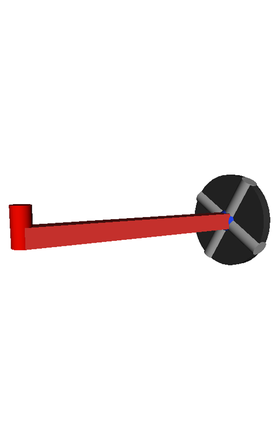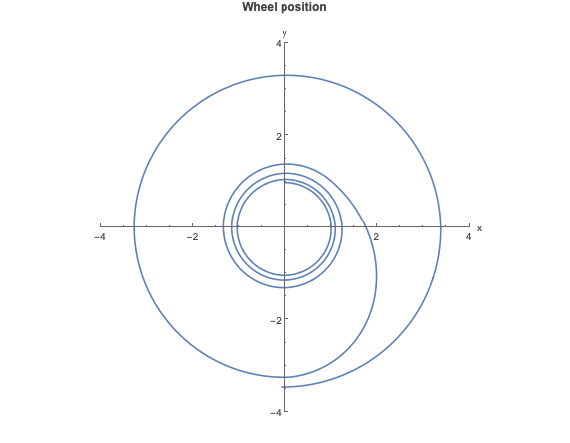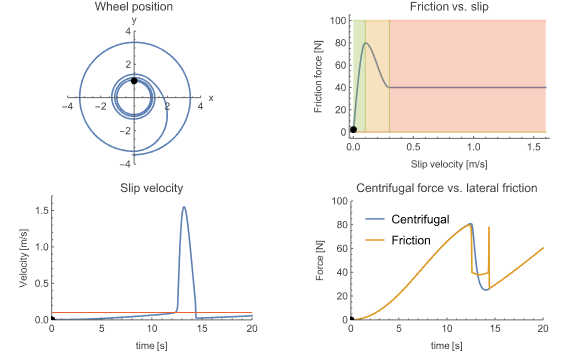Wheel with Dry Friction
Although wheeled vehicles have been an important mode of transportation for more than 5,000 years, the dynamic behavior of wheel-surface interactions is still quite tricky to understand. Here, we study how a wheel modeled with dry friction behaves when driven with a constant torque around a pole.
To run this example, you'll need
The latest versions of System Modeler and Mathematica.
Please make a selection:
Get afree trial Continue
with download
The Model

A virtual test rig for the wheel. All model components are available in the PlanarMechanics library and the built-in libraries.

Generated 3D view of the test rig.
Simulation Results

As the wheel starts accelerating, the distance from the center will increase due to lateral slipping. Initially, this slipping is small, and the wheel moves in an almost ideal circle. However, as the slip velocity increases as a result of an increasing centrifugal force, the wheel starts to slide.

The sliding of the wheel can be understood by studying the force of friction on the wheel as a function of slip velocity. Note that as the slip velocity reaches a certain point, the force of friction decreases, sliding begins, and the wheel’s distance to the center quickly increases. Then, once the distance is large enough and the centrifugal force has become lower than the force of friction, the slip velocity decreases, and the wheel once again moves in a circle.
Wolfram System Modeler
Try
Buy
System Modeler is available in English
and Japanese
on Windows, macOS & Linux »
Questions? Comments? Contact a Wolfram expert »